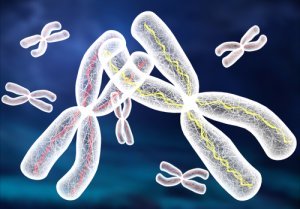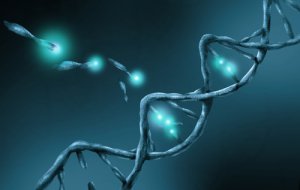Author:
P. Medawar
 History:
History:
This theory was proposed in 1952. Medawar’s theory was written in response to, and as an alternative for, A. Weismann’s earlier programmed death theory.
Example:
A strong, active,
Description of the Theory:
The sense of the theory is following: genes with harmful mutations exhibiting in old age does not meet any significant resistance of the natural selection, thereby mutations in such genes accumulate and cause aging.  According to the mutation accumulation theory, genes useful in early life of an individual (e.g. genes involving in reproduction) are supporting by the natural selection in contrast to genes useful in old age (e.g. genes reducing the risk of oncological or neurodegenerative diseases).
According to the mutation accumulation theory, genes useful in early life of an individual (e.g. genes involving in reproduction) are supporting by the natural selection in contrast to genes useful in old age (e.g. genes reducing the risk of oncological or neurodegenerative diseases).
Thus just the young generation, not the old one makes the main contribution in the creation of new generations. The author of the mutation accumulation theory relied on the fact that any population experiences hunger, drought, predator pressure, diseases and accidents, therefore, frequently, the cause of death is random injuries. Hence P. Medawar concluded that old individuals are too scanty in nature that they cannot impact on the genepool of the population neither in favour of aging not against it. The mutation accumulation theory demonstrates
tion. While harmful mutations showing its effects in youth meet tough resistance of the natural selection due to negative effect on reproductive fitness, the similar mutations showing its effects in old age are comparatively neutral as their carriers have already given their own genes to descendants.
Additions and Сriticism:

Restricted field of use. The mutation accumulation theory implies that an individual lives in very aggressive and unstable environment when even a small difference in qualities important for survival (e.g. speed and strength) may be useful.
If there is enough resources, no predator and if the environment is quite stable, elderly individuals will be able to leave descendants. Thus the natural selection will advantage the genes associated with longevity.
These critical notes result in the emergence of the antagonistic pleiotropy theory.
Existence of organisms with «acute» programmed death. There is a number of diverse organisms (e.g. salmon, octopus, marsupial mouse, and bamboo) which display instances of death closely following an act of sexual reproduction. Death in these species appears to be controlled by the reproductive function or controlled by whatever triggers reproduction as opposed to calendar age.
 Mutations influence mainly the active genes. Therefore, accumulation of mutations in active genes only will affect the process of aging. That means these genes’ activity is associated with aging and beyond the reproductive period. The evolution assists in keeping these genes' activity in old age, and if the mutagenesis in such genes is weak, these genes will probably be able to play a positive role in the health maintenance in a senescent organism.
Mutations influence mainly the active genes. Therefore, accumulation of mutations in active genes only will affect the process of aging. That means these genes’ activity is associated with aging and beyond the reproductive period. The evolution assists in keeping these genes' activity in old age, and if the mutagenesis in such genes is weak, these genes will probably be able to play a positive role in the health maintenance in a senescent organism.
Resume:
It is necessary to supplement the mutation accumulation theory with other theories of aging such as the antagonistic pleiotropy theory.
Publications:
- Medawar PB: An Unsolved Problem of Biology. London, HK Lewis, 1952.
- Charlesworth B: Fisher, Medawar, Hamilton and the evolution of aging. Genetics 2000; 156:927–931.
-
Charlesworth B: Evolution in
Age-Structured Populations. Cambridge, Cambridge University Press, 4. Gavrilova NS, Gavrilov LA, Evdokushkina GN, Semyonova VG, Gavrilova AL, Evdokushkina NN, Kushnareva YE, Kroutko VN, Andreyev AY: Evolution, mutation, and human longevity: European royal and noble families. Hum Biol 1998;70:799–804. - Strehler BL: Origin and comparison of the effects of time and high energy radiations on living systems. Quart Rev Biol 1959;34:117- 142.